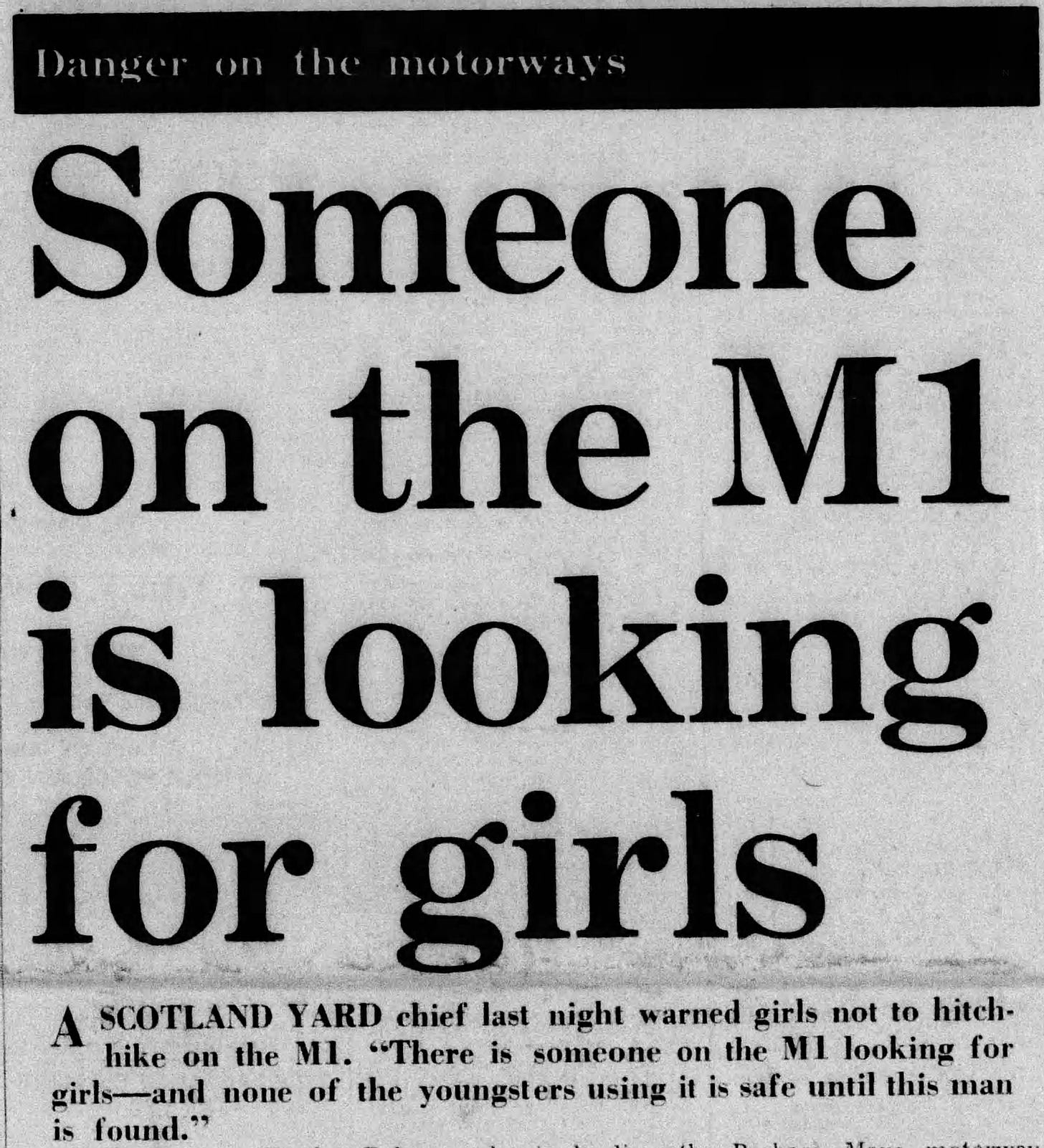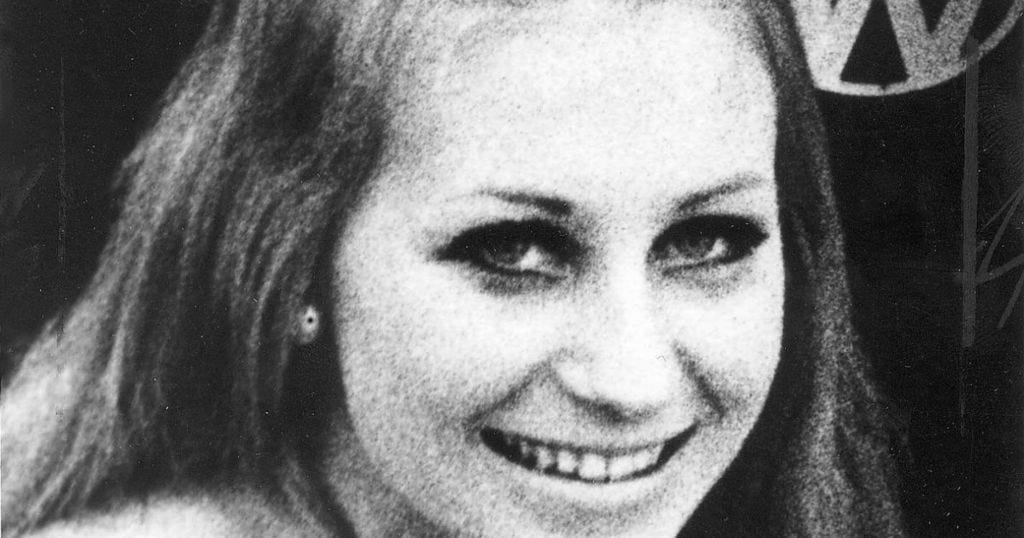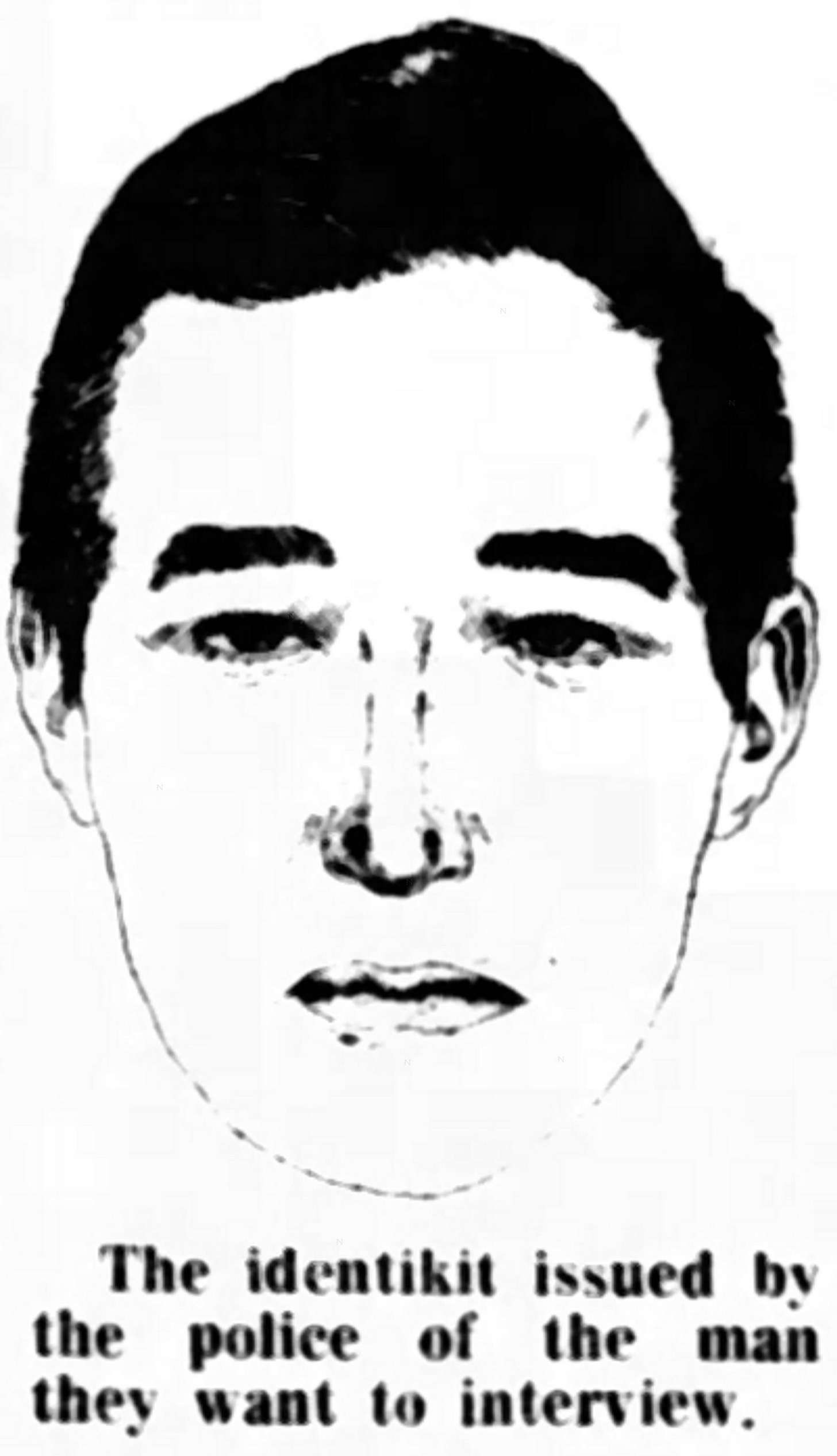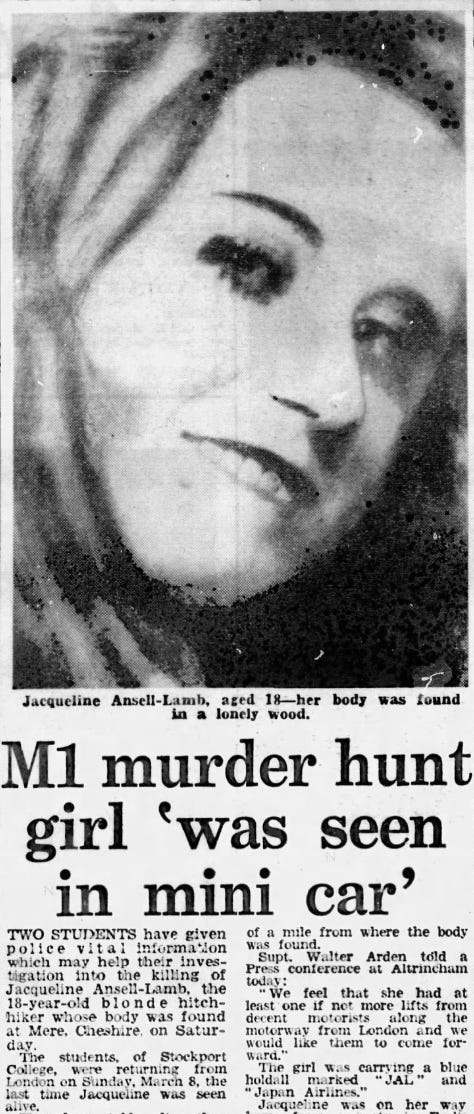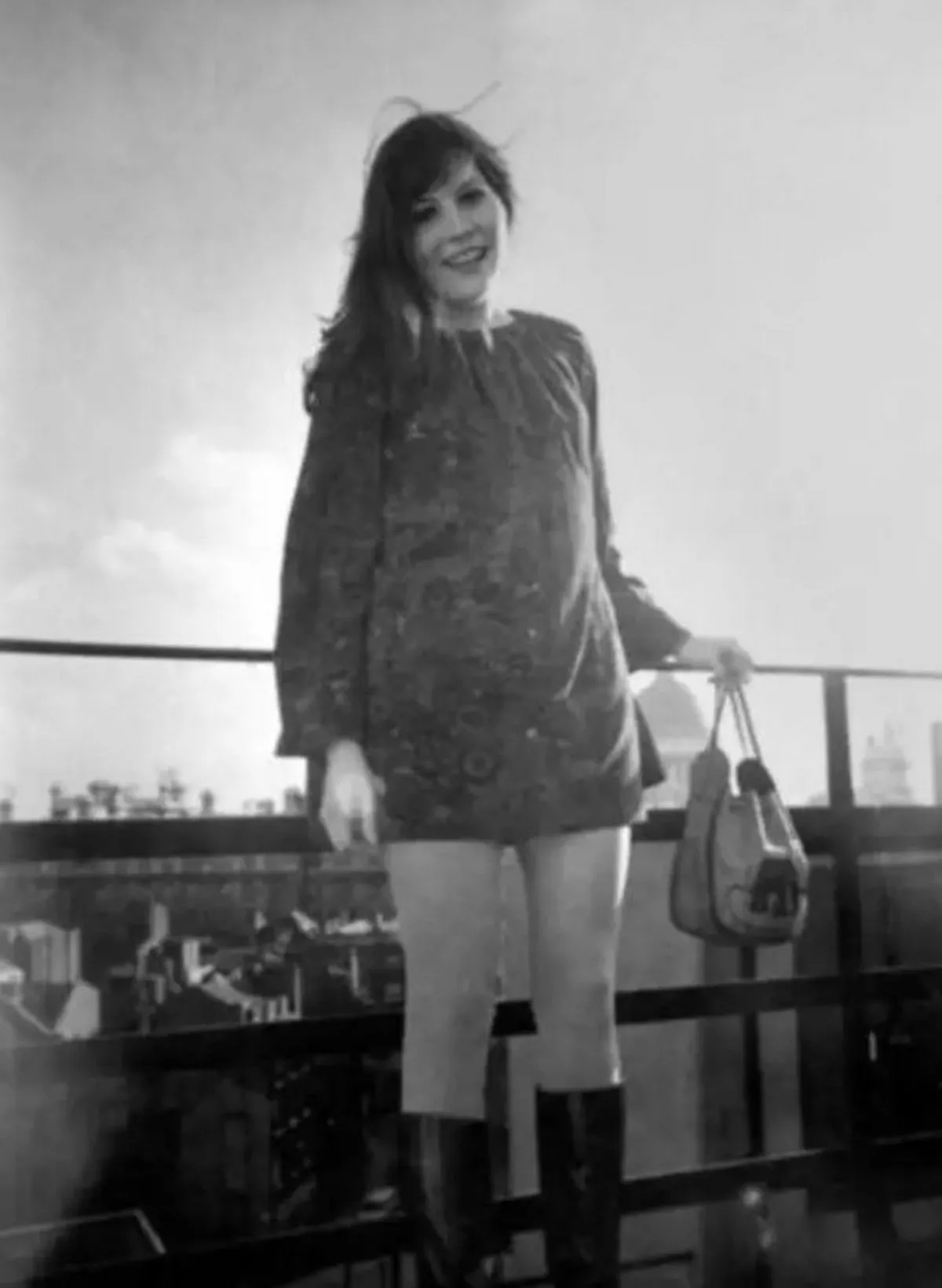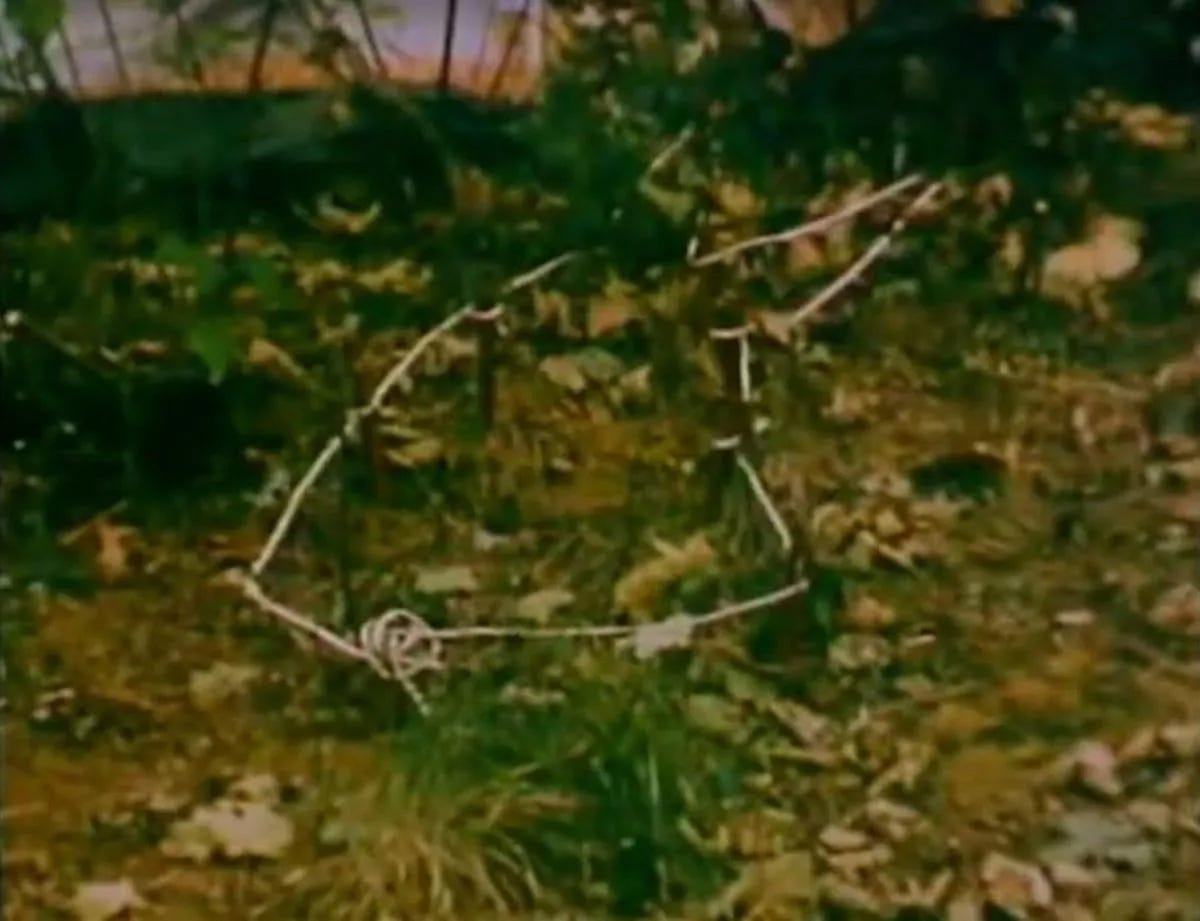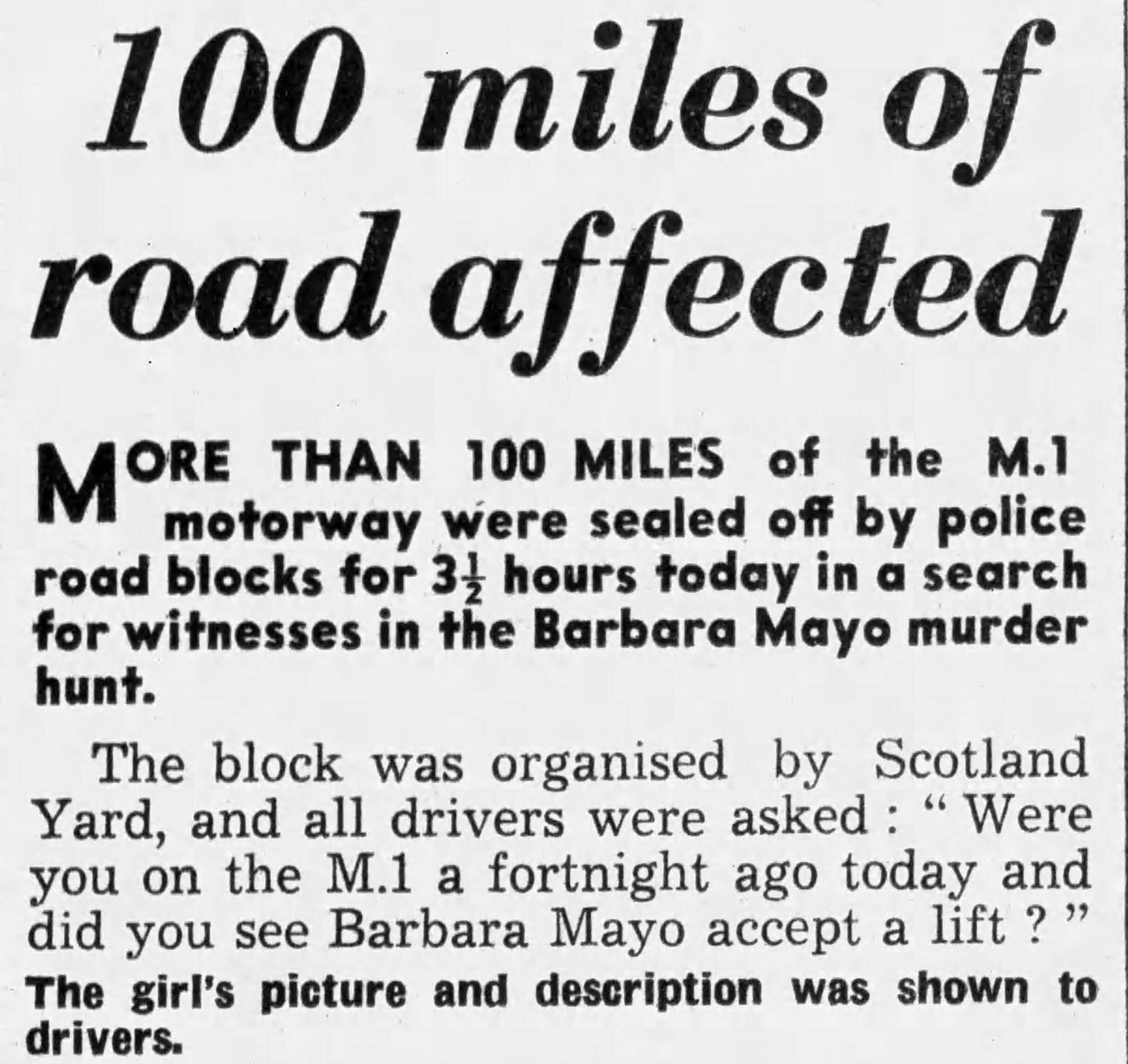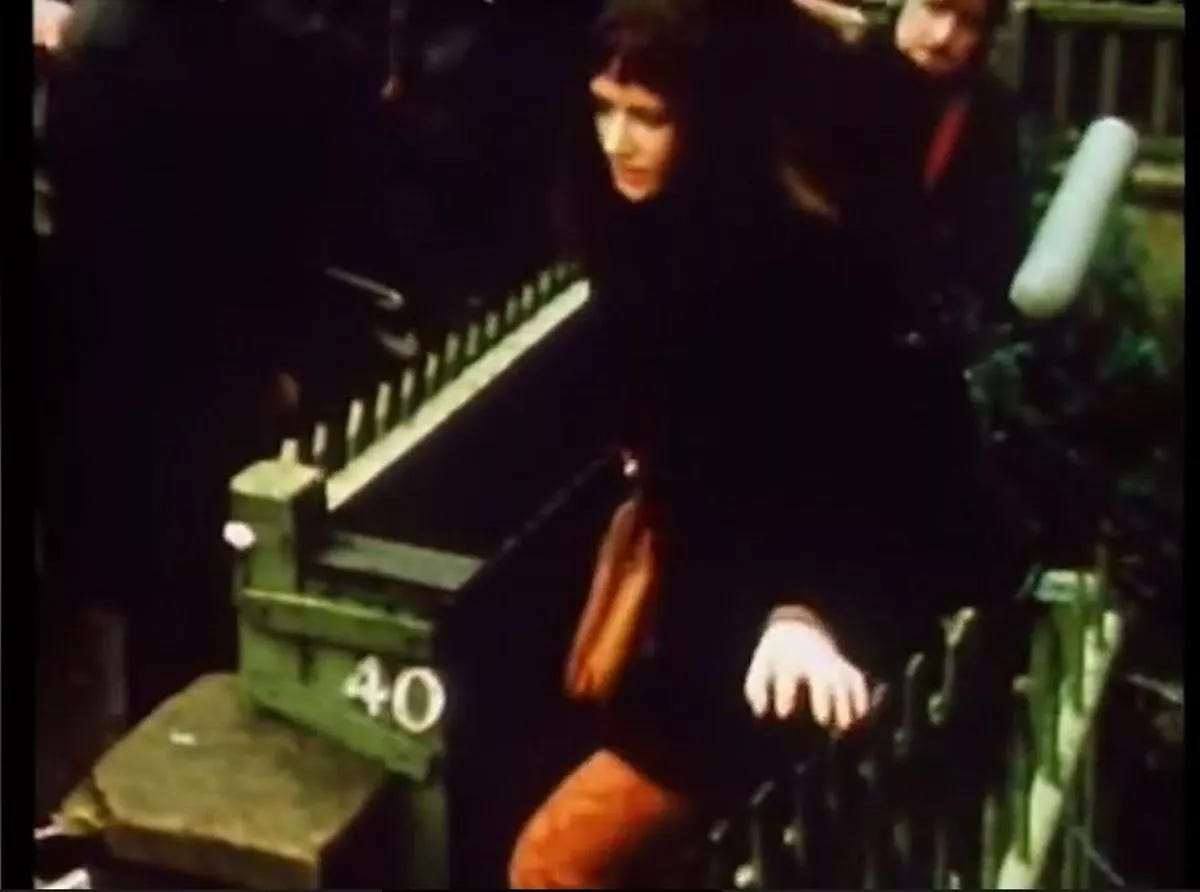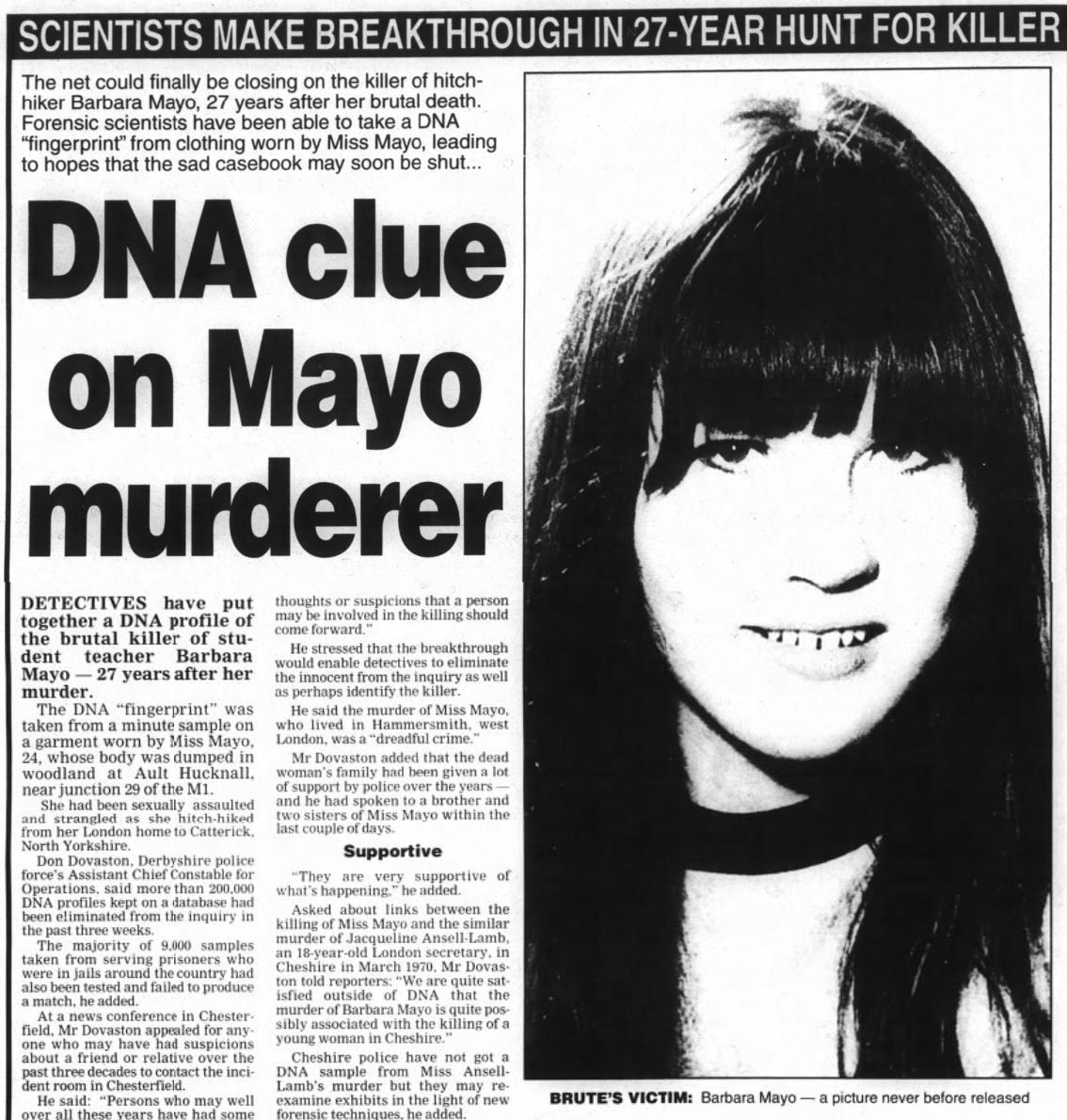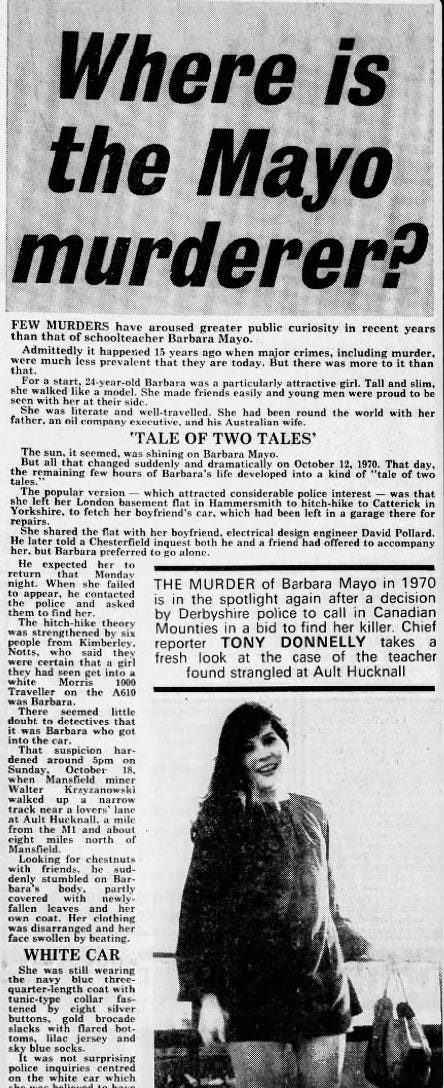"Monster of the M1": The Unsolved Murders of Jacqueline Ansell-Lamb and Barbara Mayo
In 1970, two young women were brutally assaulted and murdered after hitchhiking along Britain's M1 motorway. Because of the striking similarities, Investigators believe they may be connected
Background
On March 14, 1970, the semi-nude body of a young woman was discovered by a farmer near Knutsford in Mere, Cheshire. The victim, later identified as 18-year-old Jacqueline Ansell-Lamb, had been raped and strangled with an electrical wire.
Jacqueline, who went by Jacci, had been reported missing five days earlier on March 9th.
Seven months later, on October 18, the body of another young woman was found in a wooded area at Ault Hucknall, Derbyshire. She, too, had been raped and strangled. The victim was identified as 24-year-old Barbara Mayo, who had been missing since October 12th.
As police investigated the killings, they noted numerous similarities between the two cases and came to believe that the crimes may be linked and possibly committed by the same individual.
Though the investigation would become one of the largest in England’s history, exhausting significant resources and manpower, the identity of the killer, whom the press dubbed the “Monster of the Motorway,” remains a mystery.
Murder of Jacqueline Ansell-Lamb
Shortly before her death, 18-year-old Jacci Ansell-Lamb had moved from London to Manchester to work as a secretary. She had recently moved in with her 21-year-old flatmate, Judy Langrish.
Jacci was described as a “party-loving 60s teenager,” and on the weekend of March 7-8, 1970, she and Judy took the train to London to attend a party at Earl’s Court. At the time, Judy purchased a round-trip ticket, while Jacci bought a one-way ticket, saying she would scrounge up money for the return ticket later.
At the party, Jacci met a young man who she stayed with Saturday night. On Sunday, March 8, around 2:30 p.m., he dropped her off at junction 4 on the M1 motorway. Jacci had decided to hitchhike back to Manchester, about 200 miles away. The trip would have taken approximately four hours by car.
She shared a ride with another hitchhiker about fifty miles north to Buckinghamshire. Later that afternoon, between 4 pm and 5 pm, she was seen by witnesses getting into another car at Keele Services on the M6 near Stoke-on-Trent.
She was described as wearing a long navy maxi coat with shiny maroon shoes and wearing a blonde wig and false eyelashes. She was also carrying a Japanese Airlines (JAL) bag, because those were her initials.
The last confirmed sighting of Jacci Ansell-Lamb was at the Poplars Trucker’s Café off junction 20 of the M6 near Warrington in Cheshire, between 9 pm and 10 pm that night. Jacci was seen in the cafe with an unknown man. According to an employee, the man came in, went over to Jacci, and ordered two coffees. The two then sat in a booth talking.
About thirty minutes later, the two of them left and got into the man’s car, which some sources described as a white Jaguar. A cafe employee recalled that the man was “smartly dressed” in business attire. Witnesses described him as a white man in his twenties, approximately 5 feet tall. 9’ with a medium build and a dark suit.
Two decades after the murder, police revealed that there were distinct carpet fibers found on Jacci’s body, and they believe that the killer may have worked in the carpet industry as a salesman. The weekend that she was murdered, there was a carpet exposition going on at Earl’s Court, the same area where Jacci and her flatmate attended the party.
Less than a week later, on March 14, the body of Jacci Ansell-Lamb was found by a farmer in Mere, Cheshire, about four miles from the cafe off the M6. She had been raped and strangled, and her body was found face down. Her coat had been torn and was placed over her body. Her skirt had been removed and placed next to her. Her Japanese Airlines bag was also found nearby.
Investigation
A large-scale investigation was launched in response to Jacci’s murder, involving more than one hundred officers. They began by eliminating potential suspects, including known male associates and the man that she met at the party that weekend.
The police questioned hundreds of motorists who used the M6, but were unable to come up with any substantial leads.
Further complicating matters, on the weekend that she was murdered, there was a football match between Manchester City and West Brom at Wembley. That Sunday, thousands of fans who attended the match were driving back to Manchester, with police theorizing that one of them could have possibly been her killer.
Murder of Barbara Mayo
On Monday, October 12, 1970, 24-year-old Barbara Mayo, a trainee teacher, left her flat in Hammersmith, West London, intending to hitchhike to Catterick, North Yorkshire.
She was going to pick up her boyfriend’s car from a garage where it had been left after breaking down. The journey was about 250 miles, and Barbara intended to hitchhike up the M1.
When she failed to return, her boyfriend reported her missing. She was last seen wearing a long navy blue coat and gold or orange slacks and carrying a brown bag with a red elephant design on it.
On October 18, her body was discovered in Ault Hucknall Wood in Chesterfield, Derbyshire, near junction 29 off the M1. She had been raped, strangled, and beaten about the head. And like Jacci Ansell-Lamb, she was found face down and covered by her jacket.
Police Response
The investigation into Barbara Mayo’s death became one of the largest in England’s history. Chief Superintendent Charlie Palmer of Scotland Yard was brought in to assist in the investigation. On the morning of October 26, in an unprecedented move, Palmer ordered every vehicle at all junctions along a 150-mile stretch of the M1 motorway to be stopped and checked.
The three-and-a-half-hour operation brought traffic to a virtual standstill. Every driver was interviewed, and their names, addresses, and license numbers were recorded. Meanwhile, police in Derbyshire, where Barbara’s body was found, set up checkpoints at intersections and questioned drivers.
On November 2, police staged a reconstruction of Barbara Mayo’s movements. A policewoman was made up to resemble Barbara and wore similar clothing. Starting at Barbara’s home in Hammersmith, then going to the M1, covering Barbara’s last known movements.
This led to hundreds of reported sightings to the police. The most significant of these reports came from a man who stated that he saw a woman fitting Barbara’s description hitchhiking and getting into a white Morris Traveller van around 4:00 p.m. on October 12, near Kimberley, Nottinghamshire, less than twenty miles from where her body was found.
As a result, police looked into more than 70,000 similar vehicles throughout the country. However, nothing ever came of it.
During the investigation, more than 120,000 people were interviewed by the police. Despite this massive effort, the killer of Barbara Mayo has never been identified.
Suspects and Possible Connections
Though many members of law enforcement believe that the murders of Jacci Ansell-Lamb and Barbara Mayo may be connected, this has not been definitively proven. In the 1990s, there were erroneous reports that the two murders had been linked through DNA found at the scenes.
However, investigators were only able to isolate a DNA profile in 1997 in the case of Barbara Mayo. The profile was tested against all profiles in the national database, and no matches were found.
One of the most prevalent theories is that both women were murdered by notorious serial killer Peter Sutcliffe, known as the “Yorkshire Ripper.” Sutcliffe’s murder spree is widely believed to have begun in 1975 and lasted until his arrest in 1981. However, since his DNA was on file and did not match the profile, he was eliminated as a suspect.
Another suspect frequently mentioned in the case is Scottish serial killer Peter Tobin. However, Tobin’s first known murder occurred in 1991, more than twenty years after the murders of Jacci Ansell-Lamb and Barbara Mayo. And like Sutcliffe, his DNA being on file eliminated him as a suspect.
Throughout the years, there have been several other lesser-known suspects; however, they have all been investigated by police and ruled out.
Closing Thoughts
Despite the exhaustive efforts by law enforcement to apprehend the killer or killers, their identity remains unknown.
Fifty-five years later, the brutal murders of Jacci Ansell-Lamb and Barbara Mayo remain two of the most haunting unsolved crimes in England’s history.
Sources:
Keeling, Neal & Waddington, Marc. “The long shadow of two serial killers cast over this unsolved Cheshire murder.” Cheshire Live, 1 October 2023, https://www.cheshire-live.co.uk/news/chester-cheshire-news/long-shadow-two-serial-killers-27799097
Keeling, Neal. “Did a serial killer who stalked young girls hitchhiking murder party-loving teenager Jacci Ansell-Lamb?” Manchester Evening News, 6 May 2018, https://www.manchestereveningnews.co.uk/news/greater-manchester-news/serial-killer-who-stalked-young-14618227
“Who Killed Jackie Lamb and Barbara Mayo?” Real Life Is Horror, 20 December 2017, https://reallifeishorror.blogspot.com/2017/12/who-killed-jackie-ansell-lamb-and.html
McKinlay, Don. “The girl who hitch-hiked to her death.” Liverpool Echo, 20 November 1970, https://www.newspapers.com/image/797082839/?match=1&terms=ansell-lamb
“Crimewatch UK January 1991.” redcard74, Uploaded 26 October 2018, https://youtu.be/RDOnBKjucuQ?t=1513




